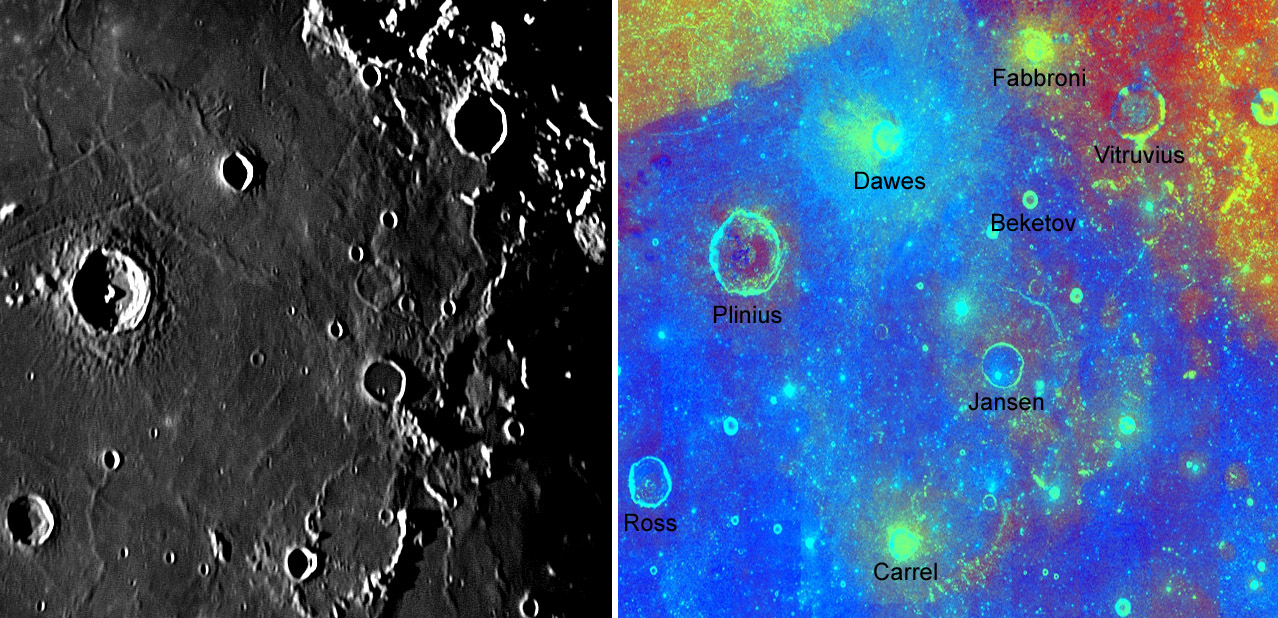April 2, 2008
Color And Morphology

left image by K.C. Pau, Hong Kong, and right from Clementine at Map-a-Planet
K.C.'s image is not the highest resolution - that comes tomorrow - but its low lighting raises questions about the definition of surface units. Looking at K.C.'s black and white image shows three or four areas with distinctly different textures and thus presumably different origins or ages. For example, the area surrounding Dawes is smoother and grayer than its surroundings - the boundaries are very sharp and easy to map. Around Beketov (formerly Jansen C) is a rough zone, with stubby fingers looking almost like thick flow fronts to the north. Another unit surrounds Jansen that is intermediate in roughness to the previous two. The image to the right is an UV-VIS ratio image with the colors depicting different compositions of the soils. The morphologic unit around Jansen is also a compositional unit - the light red hue matches the area of intermediate roughness. And the blue of the interior of Jansen shows that it has been flooded by the same blue lavas (titanium-rich) as nearby Mare Tranquillitatis. Dawes is more interesting because of being more confusing. The smooth area on K.C.'s image is generally a light blue on the Clementine mosaic. But the boundaries don't match exactly. The smooth material is too thick - see how it mostly fills in the rille northeast of Plinius - to be ejecta, it seems to be a different lava flow than the nearby darker blue lavas, but its source vents are unseen. Hmm. Many people may wonder that I haven't mentioned the most conspicuous morphology and compositional boundaries, but they are too easy. The sharp boundary between blue Tranquillitatis and yellow Serenitatis matches the morphology - they are two different lava types. And the bright red is the highlands.
Chuck Wood
Technical Details
March 2008. 250mm f/6 Newtonian + new DMK31AF03 camera; processing with CS2. Lat.: 22º 15' N, Long.:114º 10' E; elevation is 0 meter. CAW enhanced the image, reducing the smoothness of tonality, but increasing detection of unit edges.
Related Links
Rükl plates 24, 25, 35 & 36
Yesterday's LPOD: No Fooling
Tomorrow's LPOD: Look Again
COMMENTS
4-2-2008 Simon Kidd's 1st quarter illumination image in the May 11, 2007 LPOD provides a nice contrast to this 3rd quarter illumination by Pau. Kidd's image shows additional topographic relief around Dawes and Rimae Plinius not seen at this solar angle. - Kurt
COMMENTS?
Register, Log in, and join in the comments.



